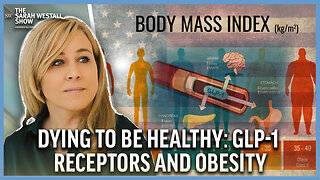Premium Only Content

what dead people are telling you in your dreams, Holding room explained, NDE in dream state
what dead people are telling you in your dreams, Holding room explained, NDE in dream state
chat GPT definition
Dreams are a common phenomenon that occur during a state of sleep. They are a series of thoughts, images, and sensations that are experienced by the mind while the body is in a state of rest. The dream state is a complex phenomenon that is not yet fully understood by science, but there are a number of theories that attempt to explain how dreams manifest.
One of the most widely accepted theories is the activation-synthesis theory, which suggests that dreams are the result of the brain's attempt to make sense of random neural activity that occurs during sleep. According to this theory, the brain is constantly receiving sensory input, even during sleep, and it attempts to create a narrative out of this input in the form of a dream.
Another theory is the neurocognitive theory, which suggests that dreams are a byproduct of the brain's attempts to consolidate memories and learning that occurred during the waking hours. This theory proposes that the brain replays these memories during sleep, and attempts to integrate them into existing neural networks, which can sometimes result in strange and vivid dreams.
Regardless of the specific mechanism that underlies dreams, it is clear that they are an important part of the sleep cycle, and can have a significant impact on both physical and mental health. Dreams can be pleasant, unpleasant, or neutral, and can vary in length and complexity.
One way that dreams manifest is through the creation of vivid visual imagery. Many people report seeing vivid, lifelike images in their dreams, which can range from simple scenes to complex and fantastical landscapes. These images can be incredibly detailed, and can sometimes be difficult to distinguish from reality. The brain's ability to create such vivid imagery during sleep is thought to be related to the fact that the visual cortex remains active even during periods of deep sleep.
Another way that dreams manifest is through the creation of emotional experiences. Many people report experiencing strong emotions, such as fear, joy, or sadness, during their dreams. These emotions can sometimes be so powerful that they can affect a person's mood even after they wake up. The emotional content of dreams is thought to be related to the fact that the limbic system, which is responsible for emotional processing, remains active during sleep.
In addition to visual and emotional experiences, dreams can also manifest in other ways, such as through the creation of sounds, smells, and physical sensations. Some people report hearing music or voices in their dreams, while others report smelling or tasting things that are not present in their waking lives. Physical sensations, such as the feeling of falling or flying, are also common in dreams, and can be incredibly vivid and realistic.
Despite the fact that dreams can be incredibly vivid and detailed, they are often difficult to remember. Most people only remember fragments of their dreams, or forget them completely upon waking. However, there are techniques that can be used to increase dream recall, such as keeping a dream journal, which involves writing down any dreams that are remembered upon waking.
Overall, the dream state is a complex and mysterious phenomenon that continues to fascinate scientists and researchers. While there is still much that is not yet understood about dreams, it is clear that they play an important role in both our mental and physical health, and are an essential part of the human experience.
-
 2:25
2:25
Mike Martins Channel
2 days ago $0.09 earnedElon Musk is one of them
2563 -
 49:35
49:35
Donald Trump Jr.
12 hours agoA New Golden Age: Countdown to Inauguration Day | TRIGGERED Ep.202
154K170 -
 1:14:34
1:14:34
Michael Franzese
11 hours agoWhat's Behind Biden's Shocking Death Row Pardons?
68.7K43 -
 9:49
9:49
Tundra Tactical
9 hours ago $15.74 earnedThe Best Tundra Clips from 2024 Part 1.
88.6K7 -
 1:05:19
1:05:19
Sarah Westall
9 hours agoDying to Be Thin: Ozempic & Obesity, Shedding Massive Weight Safely Using GLP-1 Receptors, Dr. Kazer
78.5K20 -
 54:38
54:38
LFA TV
1 day agoThe Resistance Is Gone | Trumpet Daily 12.26.24 7PM EST
57.3K9 -
 58:14
58:14
theDaily302
18 hours agoThe Daily 302- Tim Ballard
57.1K9 -
 13:22
13:22
Stephen Gardner
12 hours ago🔥You'll NEVER Believe what Trump wants NOW!!
106K276 -
 54:56
54:56
Digital Social Hour
1 day ago $10.83 earnedDOGE, Deep State, Drones & Charlie Kirk | Donald Trump Jr.
59.2K5 -
 DVR
DVR
The Trish Regan Show
13 hours agoTrump‘s FCC Targets Disney CEO Bob Iger Over ABC News Alleged Misconduct
64.2K38